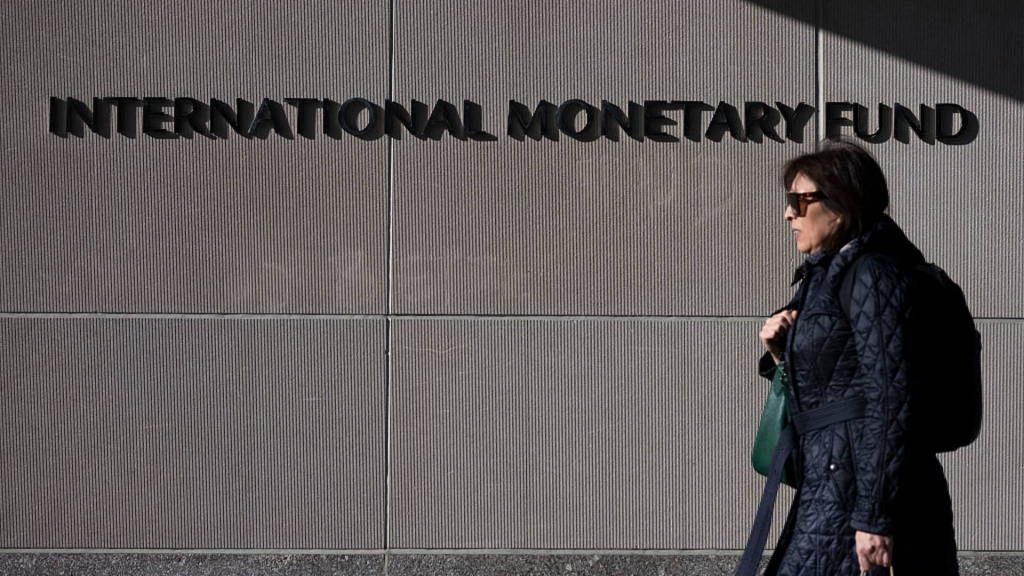Tariffs are creating significant challenges for both the U.S. and global economies, prompting the International Monetary Fund to revise its growth forecasts for 2025 downwards.
The introduction of “reciprocal” tariffs by President Donald Trump on April 2 has not only unsettled stock markets—evidenced by a 9% decline in the S&P 500—but they have also triggered retaliatory measures from other nations.
The IMF highlighted in its April 2025 World Economic Outlook that this situation represents a substantial negative shock to economic growth.
The updated outlook provides a “reference forecast” for global growth and inflation using data available as of April 4, including the impact of the new tariffs. It revises the earlier projections shared in January and excludes subsequent developments such as the 90-day pause on increased rates and the exemption on smartphones.
The IMF has now adjusted its U.S. growth forecast for 2025 to 1.8%, marking a decrease of 0.9 percentage points from its January estimate.
Although a recession has not been officially forecasted for the U.S., IMF Chief Economist Pierre-Olivier Gourinchas indicated that the likelihood of recession has increased to 40%, up from 25% in October 2024.
The global growth forecast has similarly been revised, now projected at 2.8% for 2025, which is a reduction of 0.5 percentage points from the previous estimate.
“The announcement made on April 2 necessitated a rapid reassessment of our nearly finalized projections, compressing the usual lengthy production cycle into less than ten days,” Gourinchas stated in the report.
“Tariffs act as a negative supply shock for the economy imposing them,” he added.
Inflation Surge Expected in Advanced Economies
The IMF has also updated its inflation forecasts for advanced economies, including the U.S., United Kingdom, and Canada, now predicting a headline inflation rate of 2.5% for 2025, reflecting an increase of 0.4 percentage points from earlier projections.
For the U.S., the inflation outlook has also been revised higher to 3%, up by 1 percentage point from the initial January forecast.
The IMF attributed this uptick to persistent price pressures within the services sector, alongside rising costs in core goods, and the supply chain disruptions caused by the recent tariffs.
While inflation in major economies is expected to rise, certain emerging markets and developing economies have seen their inflation projections adjusted downwards.
The report notes that the extent to which these tariffs impact central banks’ efforts to control inflation hinges on whether they are perceived as a temporary or permanent measure.
Historically, market fluctuations have resulted in a stronger U.S. dollar compared to other currencies, which adds upward pressure on inflation in those countries. However, the recent downturn in markets has reversed this trend.
“The relationship between tariffs and exchange rates is complex,” Gourinchas explained. “In the medium term, the dollar could weaken in real terms if these tariffs lead to decreased productivity in the U.S. tradable sector compared to its trade partners.”
Get Your Ticket to Pro LIVE
Join us at the New York Stock Exchange!
Uncertain markets? Gain an edge with Finance Newso Pro LIVE, an exclusive event at the historic New York Stock Exchange. In today’s fast-moving financial environment, access to expert insights is crucial. As a Finance Newso Pro subscriber, we invite you to join us for our first exclusive, in-person Finance Newso Pro LIVE event at the iconic NYSE on Thursday, June 12.
Participate in interactive Pro clinics led by our experts, Carter Worth, Dan Niles, and Dan Ives, with a special edition of Pro Talks featuring Tom Lee. Enjoy the opportunity to network with Finance Newso professionals, talent, and other Pro subscribers during an engaging cocktail hour on the legendary trading floor. Tickets are limited!


























